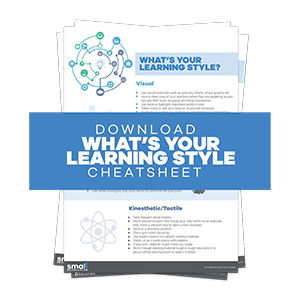It’s no secret that Google loves tweaking its search engine algorithm.
In the past ten years alone, Google has rolled out seven major updates to its algorithm—not to mention the thousands of updates that happen yearly.
Changes like these are a cause of celebration for many users. However, there’s a group that doesn’t share the same excitement.
SEOs and copywriters.
You’re reading this because you form part of this large ensemble: Always being thrown off-balance by Google’s love for being clever in its own game. After all, how are you supposed to win the game when the ‘referee’ keeps changing the rules midway?
The good news is that SEO (Search Engine Optimization) copywriting is easy to crack. If you’re a blogger or an SEO copywriter and want to build an audience, you need to get smarter with creating content.
Shortly, you’ll learn how you can improve and optimize your writing. As a result, you’ll not just write content to impress search engines, but content that people want to read and engage with.
How do you do this? Let’s kick things off with keyword research.
Conduct Keyword Research
Keyword research is the backbone of SEO. As an SEO copywriter, you need to use the right keywords for every piece you’re going to write.
To understand which keywords work best in your content, you want to ask yourself a few questions first:
- What type of content am I writing? (landing page, blog post, eBlast)
- What’s the purpose of the content? (informative, transaction, subscribe)
- Who is the target audience?
- Which tone of voice or style should I use?
- Which keyword ranks more?
What are keywords? They’re short phrases or single words that users search for on the internet to find what they’re looking for.
Before writing your content, you need to research the best keywords that will help rank your content higher in SERPs (Search Engine Results Pages).
Once you’re through with the research, don’t celebrate yet. You’ve just won half the battle. The next war you need to win in the SEO playbook is to understand keyword classification.
Put another way, keyword classification helps you understand what people are searching for. For instance, does a user want to buy a particular product or not?
We classify keywords as informational and commercial.
Most people use these keywords when they want free information without having to pay for it. However, when creating content, informational keywords won’t help you convert readers into potential prospects.
Commercial keywords show buyers’ intent’to buy. In most cases, they show that a user is in a hurry and they want solutions quickly.
Here’s a breakdown of the two and how you can incorporate them in your content creation process:
| Type of Keyword | Function (when to use) | Example |
| Informational | Engage, nurture, educate, or build a brand | How to wash a cat. |
| Commercial | Get a user to buy a product or sign up for an email list | Lose 20 pounds in 2 weeks. |
On keywords still, you must be wondering whether keyword targeting is a good practice? Yes. Many search engines such as Google use keywords to gauge your content. However, don’t over-optimize.
Understand Search Intent
Search intent is a determining factor in the SEO copywriting world when you want to rank for any keyword on Bing, Yahoo, or Google. Simply put, search intent is the primary purpose of an online search: It’s why a user will Google search something.
Think of it this way. Is a user searching for something because:
- They want an answer to their questions
- They want to buy a specific product or service
- They want to visit a particular website
Search intent is an area that professionals in the content marketing field need to use and comprehend. After all, what’s better than giving users what they need?
Google takes search intent seriously, and so should every SEO copywriter out there. That’s why you need to acquaint yourself with the different search intent types:
Navigational Intent
Web-users using this type of search intent want to visit a specific website. For instance, people who search for [Twitter] want to visit the Twitter website.
Informational Intent
This intent is from users who have specific terms that they need to learn from. For example, this could be information about the weather update, caring for the elderly, or digital marketing.
Remember, Google’s search engine algorithm understands intent: It doesn’t just show results for a specific term. For example, it knows that people searching for [lasagna] are more likely looking for recipes, not its history.
Transactional Intent
Many people buy products on the internet and will surf the web to find the best deals. When consumers use transactional intent, it means they want to buy something.
Note: This type of intent is purely transactional.
Research Your Blog Post Headlines
In SEO copywriting, many experts believe content is king. However, the headline has taken over the throne.
Not that content is unimportant—it still is—but the headline is what will attract people to read your copy.
When crafting your article headlines, they should be relevant, click-worthy, snappy, and intriguing. The number one area where you need to bring your A-game is in the headline. Remember, an impressive title means your content ranks higher in organic search results.
The battle with writing copy headlines is that experts in the SEO copywriting world cannot agree when it should happen. Many say you should write the headline first, then write the rest of the content later, or vice versa.
It’s simple: Experiment with both techniques and pick what works better for you.
If you’re struggling to write click-worthy headlines, follow these tips:
- Have a number in the headline: ProBlogger says using numbers in your web content helps readers view you as an authoritative source of information.
- Keep it short: Most search engines want title tags that have a range of 50–60 characters.Note: As a reference, the headline of this article, “SEO Copywriting Explained: 3 Tips to Optimize Your Writing,” is 58 characters.
- Include primary keywords in the headline: Keywords play a vital role from a search engine standpoint. When users search for something, they want to see their query reflected in the organic results section.
- Use Google as your inspiration source: The best SEO practice for creating quality content is finding out what’s already out there. Search for your primary keyword and pay keen attention to the headlines and topics that show up.
Note: You also need to optimize your title tag and meta description. Doing this helps to increase organic traffic and pageviews.
💡Pro Tip: How to Improve Your Writing Style
As an SEO copywriter, a more significant part of your writing journey is learning how to improve your writing style. We recommend reading a lot. Reading blogs, magazines, or novels inspires you to produce amazing content.
Besides reading, you’ll also need to work harder and keep abreast of the ever-changing SEO world.
Create Detailed and Easy-to-Read Content
According to Gary Illynes, a webmaster and analyst, well-organized and readable content increases your search engine ranking.
As a rule of thumb, don’t fill your content with ambiguous phrases or text that is too hard to comprehend for the average reader.
Did you know that only 2 percent of adults globally read at the top level? We’re not implying that we have an illiterate population, it’s just that online readers don’t want to read complex content.
That said, ensure you know the audience you’re writing for. For instance, an Ivy League university professor wants to read well-researched content that’s written with depth. You need to earn their trust by writing in a language they can easily digest.
Here are a few rules to make your content readable:
- Organize your content structure: Make use of the H1, H2, H3, and H4 heading tags. This way, your audience can understand your content easily.
- Use short headlines: Web users first skim your content before reading it. If you want your copy to rank higher, ensure your headings are short and that they inform the user what they’ll achieve by reading your content.
- Incorporate numbered lists and bullet lists: Break up long chunks of text into readable content using bullets and numbered lists.
- Use simple words: Not every one of your readers has been bestowed with a Pulitzer Prize award. Use simple vocabulary for online copy. Consider using Semrush’s free SEO writing assistant to assess your content readability score.
Copywriting SEO: Final Take
Congratulations if you’ve read this far. To be honest, only 16% of people read an entire blog from top to bottom.
As an SEO copywriter, using the above tips will help increase traffic to your website and position your brand as a source of authority.
Remember, crafting quality SEO content takes time and hard work—but it doesn’t have to. You can increase your chances of succeeding in this field by enrolling in a copywriting course. This way, you can craft content that your audience loves.
Why wait when you can learn from the experts today.


